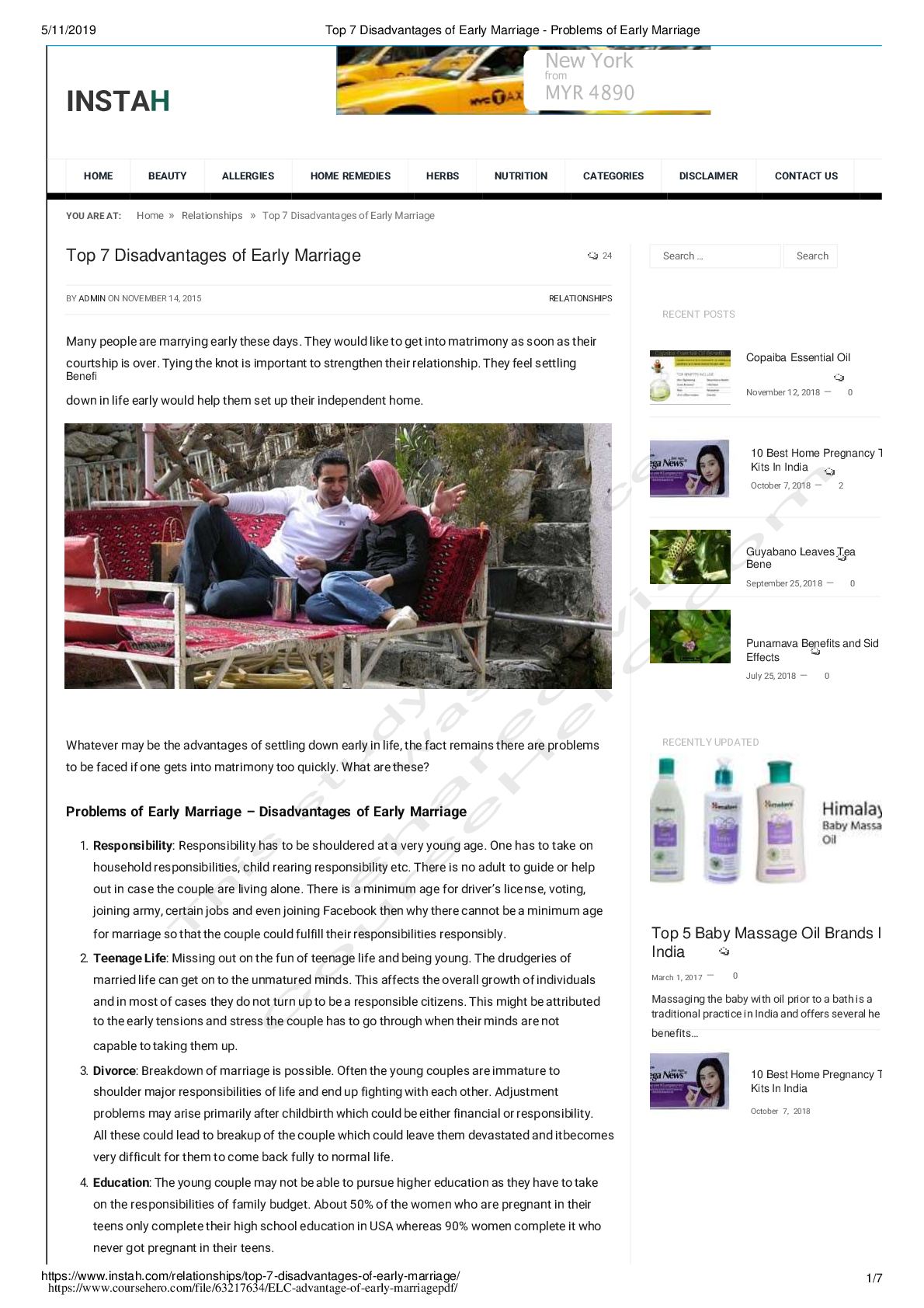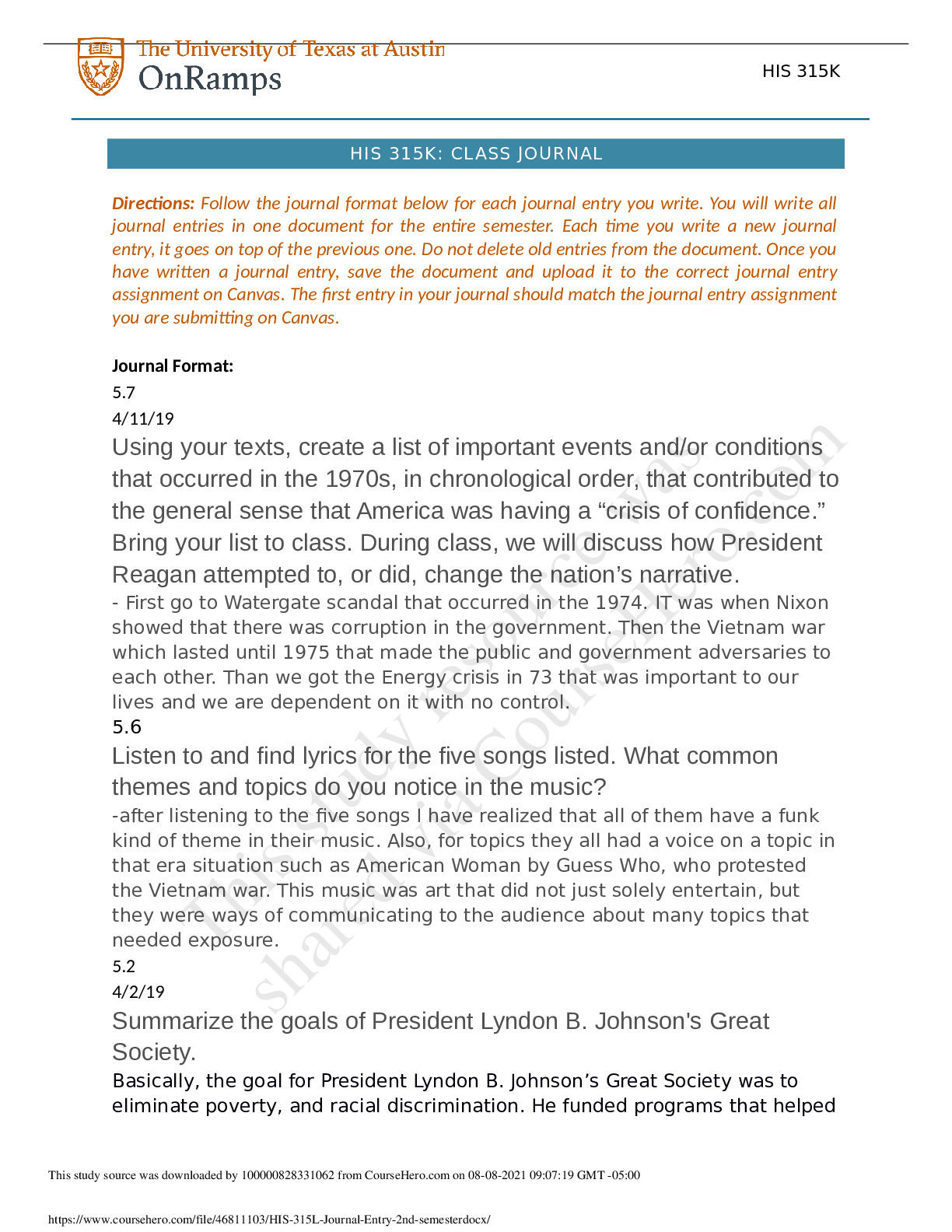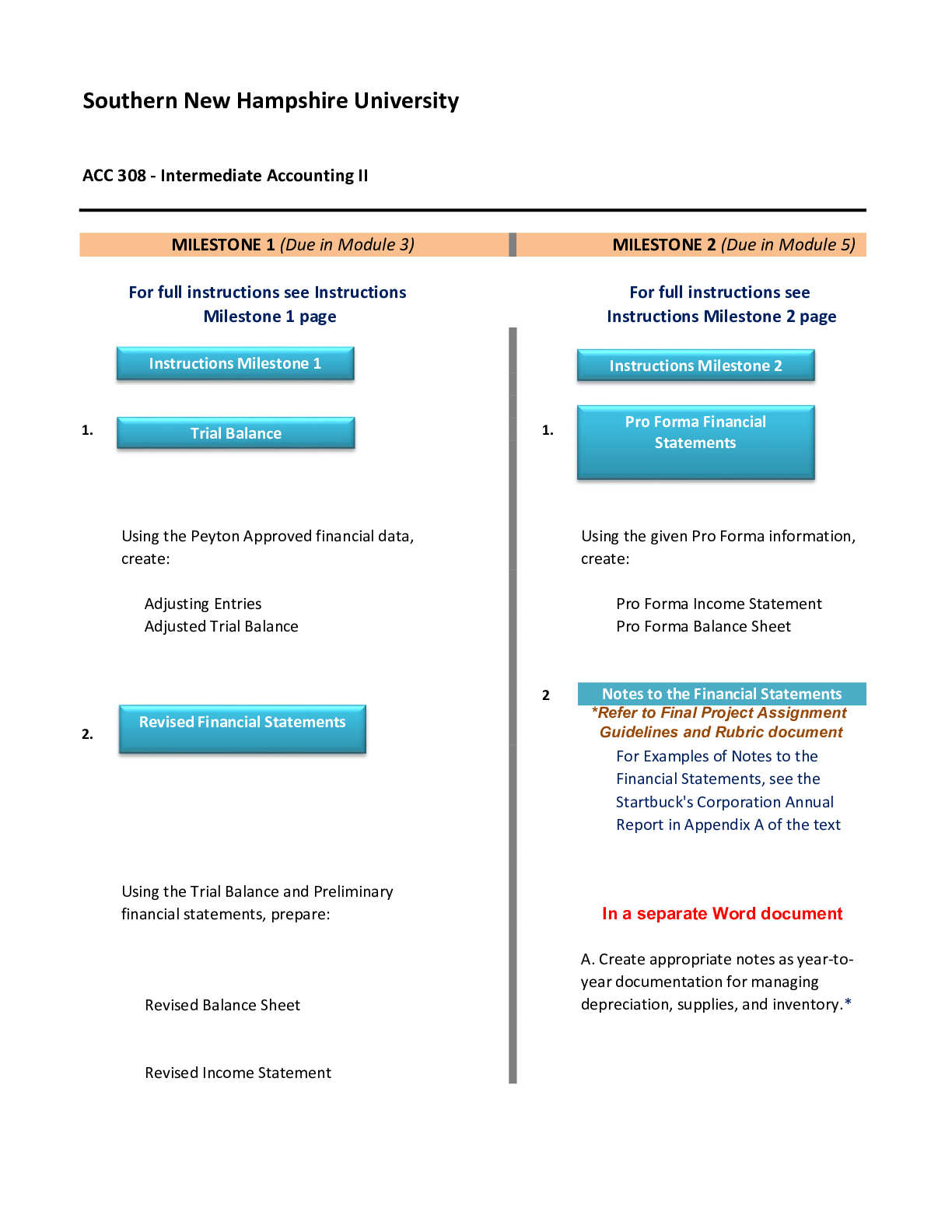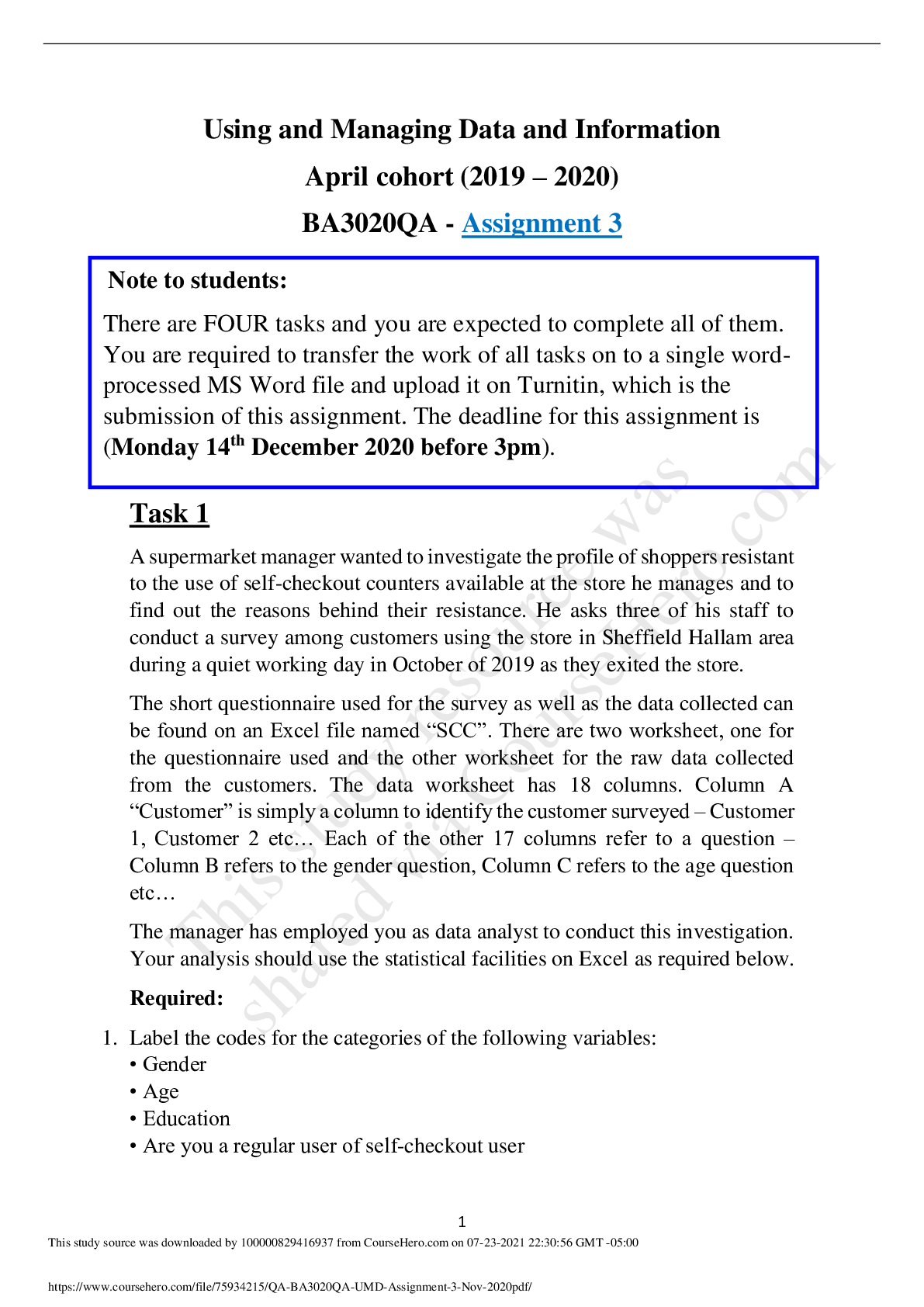Biology > Research Paper > Unlocking the Secrets in Our Genes (All)
Unlocking the Secrets in Our Genes
Document Content and Description Below
Unlocking the Secrets in Our Genes INTRODUCTION In Activity 3.1.4, you investigated five genes potentially involved in the development of lung cancer. To complete this investigation, you performed a s... imulated DNA microarrayusing healthy and cancerous lung tissue from different patients. You were able to analyze the results and identify basic trends to determine if, and how, the gene expression was different in the cancerous lung tissue from the healthy lung tissue. This information can help scientists determine the potential role these genes might play in the development of lung cancer. DNA microarrays are helping researchers learn more about the genetic mutations associated with different types of cancer; however, DNA microarrays can also be used to look at the gene expression profiles of groups of patients in order to personalize medical treatments. Mike Smith’s oncologist wants to determine the best treatment plan for Mike. He has enrolled Mike in a research study to compare Mike's gene expression profile to those of other osteosarcoma patients known to have had success with various chemotherapy medications. By taking samples from each known patient, scientists can perform DNA microarrays to determine their gene expression patterns. They can then calculate the similarities between Mike’s gene expression pattern and the gene expression pattern of each patient. If Mike has a similar gene expression pattern to one of these patients, it is likely that Mike would have a similar clinical outcome as that patient. This means that if that patient responded well to a particular type of chemotherapy medication, it is likely that Mike would also respond well. One popular method to calculate the similarities between gene expression profiles is called the Pearson correlation coefficient, also known as the Pearson product-moment correlation coefficient. This method statistically measures the correlation, or relationship, between two sets of data. In this activity, you will use the Pearson correlation coefficient method to determine which patient’s gene expression profile is the most similar to Mike Smith. You will use this information to help Mike’s oncologist make an informed decision as to which chemotherapy medication should be prescribed to Mike [Show More]
Last updated: 2 years ago
Preview 1 out of 8 pages
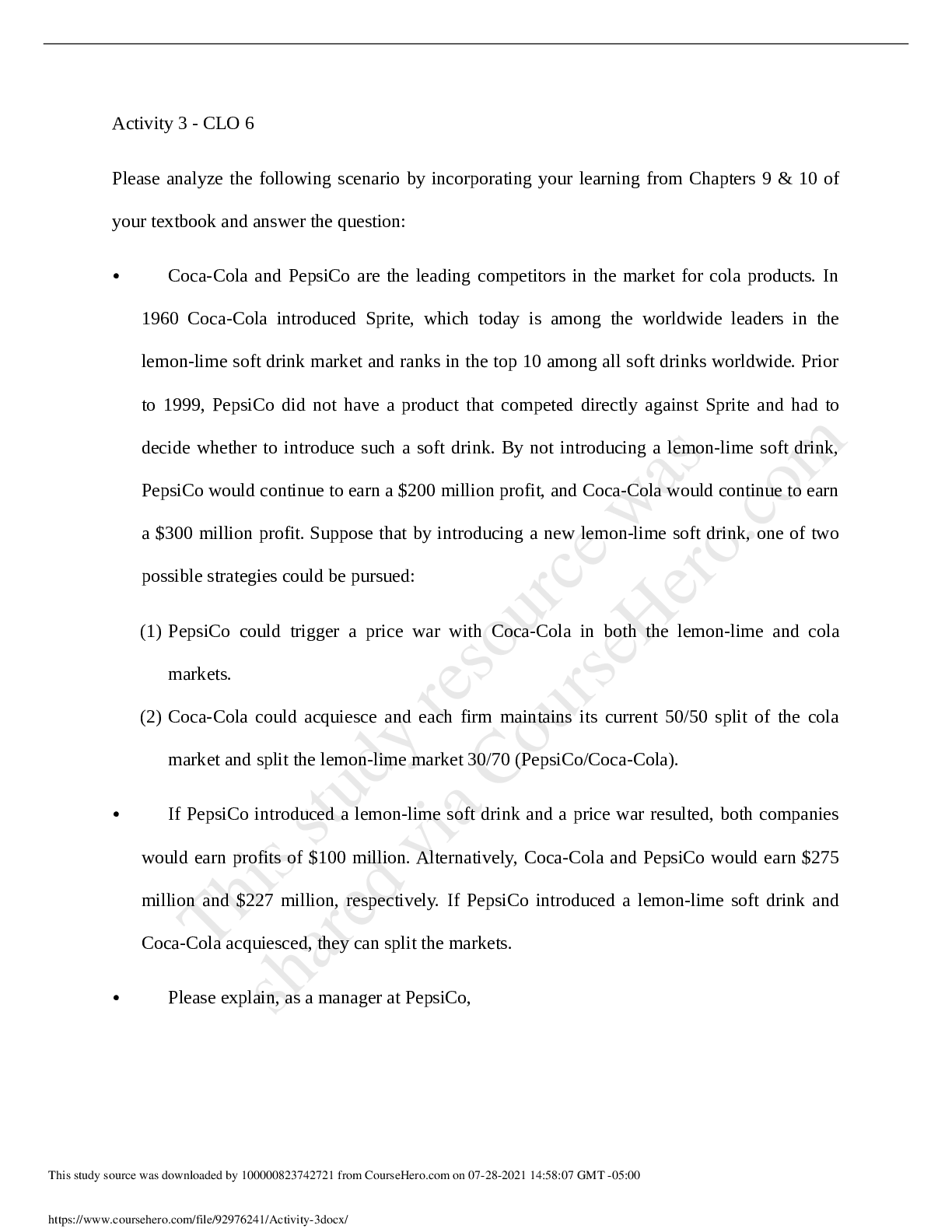
Buy this document to get the full access instantly
Instant Download Access after purchase
Buy NowInstant download
We Accept:

Reviews( 0 )
$8.00
Can't find what you want? Try our AI powered Search
Document information
Connected school, study & course
About the document
Uploaded On
Jul 20, 2021
Number of pages
8
Written in
Additional information
This document has been written for:
Uploaded
Jul 20, 2021
Downloads
0
Views
112

.png)
